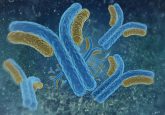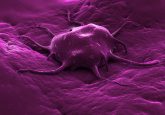No more going around in circles: unlocking the potential of cyclical peptides

In a proof of concept study, a cyclical peptide library has been generated and screened against the disease target thrombin, which demonstrated high stability and oral bioavailability. The generation of orally available cyclical peptides marks a promising step towards unlocking the full potential of peptide therapeutics and may, in the future, offer solutions to curing difficult-to-target diseases such as certain types of cancer.
Cyclic peptides are renowned for their high affinity, versatility and specificity in binding. However, they are also rapidly digested or poorly absorbed by the gastrointestinal tract, meaning their development as oral therapeutics has been hampered. Targeting proteins for oral drug delivery is challenging as the vast majority of natural and de novo peptides have a large size, polar surface or are proteolytically unstable and consequently require injection.
A research team from École Polytechnique Fédérale de Lausanne (EPFL; Lausanne, Switzerland) has generated a cyclical peptide library that can target the enzyme thrombin, which has a central role in blood coagulation. Regulation of thrombin is imperative for preventing and treating thrombotic disorders such as strokes and heart attacks.
Christian Heinis, Associate Professor at EPFL, commented:
“We have now succeeded in generating cyclic peptides that bind to a disease target of our choice and can also be administered orally. To this end, we have developed a new method in which thousands of small cyclic peptides with random sequences are chemically synthesized on a nanoscale and examined in a high-throughput process.”
To generate cyclic peptides that can target thrombin and are sufficiently stable to be administered orally, the team developed a two-step combinatorial synthesis strategy to produce a library of cyclical peptides with thioether bonds, which enhances their metabolic stability when administered orally. In this new process, linear peptides are synthesized and cyclized, i.e., they undergo a chemical process of forming a ring-like structure. This is achieved by using ‘bis-electrophilic linkers’ to form stable thioether bonds. The cyclized peptides then undergo acylation, a process that attaches carboxylic acids to them, further diversifying their molecular structure.
A comprehensive library of 8448 cyclic peptides was produced, with an average molecular mass of ~650 Daltons (Da). When tested in rats, the peptides demonstrated oral bioavailability of up to 18%, despite orally available small molecules having a recommended maximum limit of 500 Da. Considering that orally administered cyclic peptides generally have a bioavailability >2%, the team has made significant progress in tackling this issue.
“There are many diseases for which the targets were identified but drugs binding and reaching them could not be developed,” stated Heinis. “Most of them are types of cancer, and many targets in these cancers are protein-protein interactions that are important for the tumor growth but cannot be inhibited.”
You may also be interested in:
- Panel discussion: small molecule analysis using MS
- Small molecule analysis using MS
- Newly elucidated role of the GPCR protein possibly leads to more targeted therapeutics
The team plans to target several intracellular protein-protein interaction targets where development of inhibitors based on traditional small molecules has been difficult.
Sources: Merz ML, Habeshian S, Li B et al. De novo development of small cyclic peptides that are orally bioavailable. Nat. Chem. Bio. dio:10.1038/s41589-023-01496-y (2023) (Epub ahead of print).





